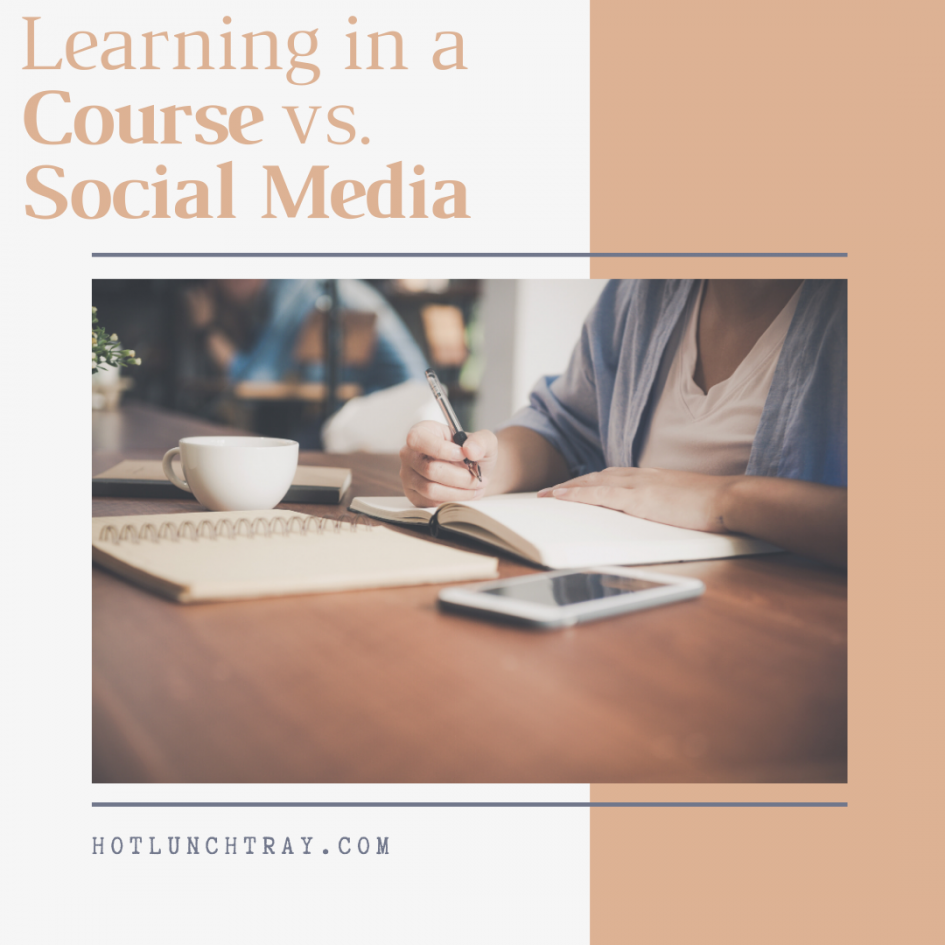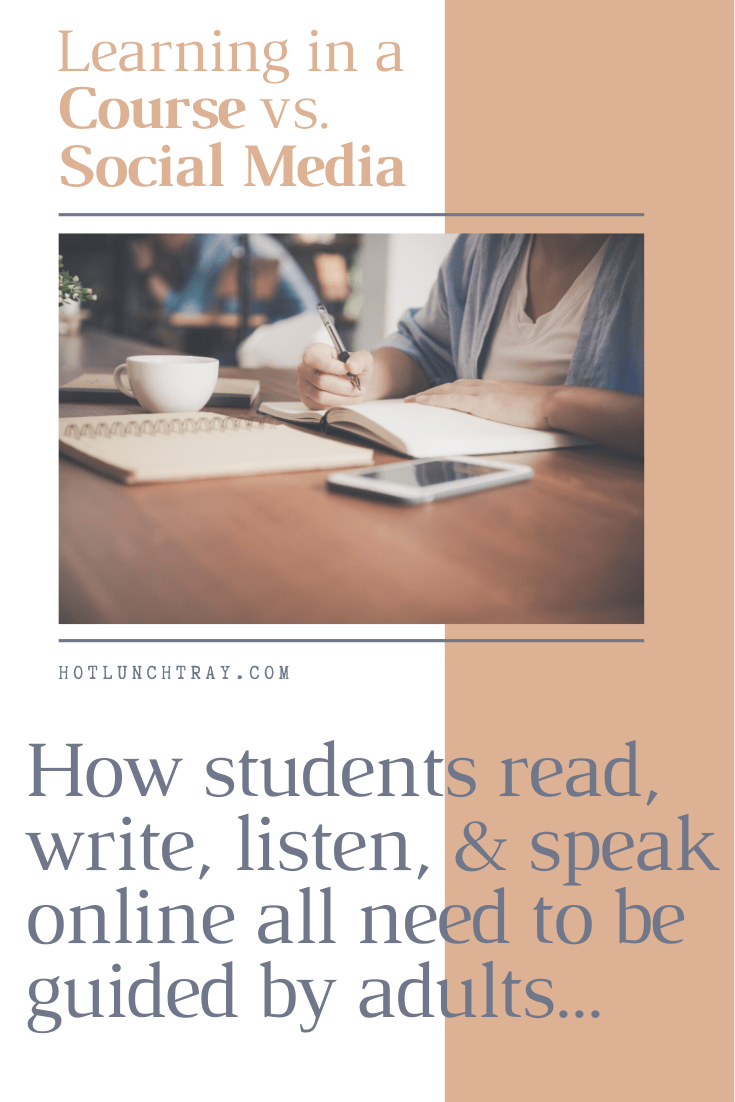Differentiating Course and Community
Both coursework and interactions in online learning communities, such as social media, are concerned with literacies. Song “pluralizes the word” literacy to denote the multiple literacies today’s students have to possess to interact and learn successfully (2017, p 66). Each contains a different level of formality based on history and composition, dictating differing behaviors.
Courses work online mirrors the prior face-to-face experience to an extent, but adds in increased access via online capabilities. It is more formal than newer online learning communities, which have little history in the face-to-face world and so can take advantage of online opportunities instead of reacting to/guarding against those opportunities.
New Literacies
While traditional literacies of reading, writing, listening, and speaking are sufficient to operate within an online course environment, it is not enough to learn to the fullest extent in a truly online learning environment. Some of the new considerations to incorporate are managing student privacy, digital footprint, online relationships, cyberbullying, and news and media literacy (James, Weinstein, & Mendoza, 2019). How students read, write, listen, and speak online all need to be managed by students, or guided by adults, with those considerations in mind.
Management Differences
While more formal online learning environments such as courses are walled gardens in the sense that a known, trusted adult is managing the learning environment, social media is not. Even though we do have to treat students differently than adults as learners, I would suggest that adults and some children have equivalent levels of experience in current social media available.
K12 educators benefit from guidance and both because this is a new way to interact and because they are role models for their students. I have traditionally helped educators start using Twitter. I offered a Twitter Challenge in my school district back in 2016. Twitter was still new enough that I had to physically be in the same room, at the same time, with some people for them to create an account. I share basics with educators:
- Keep it professional.
Consider your profile image and your Twitter username as a layer of projecting a professional image.
While an uncurated Twitter can contain much that you would not want to participate in, the education value in Twitter is out there. You need to look for it by searching and following: your school, district, #edchat, those who follow you may be useful to check out and see if they are educational accounts, and then you may want to follow them back. - This isn’t about a number; Twitter is about connections and ideas.
The number of those following you is not a status symbol. The fact is, most educators follow back, so there is not an “impressive” level of followers. - Have in mind who you want to follow, but keep an open mind too.
Be aware of the kind of educator you want to follow, learn from, ask questions of, but look for others who are also intentionally in their learning even if they are not in your predetermined subjects, location, or grade band. - Like, Retweet, Tweet.
A reasonable progression is to start by liking tweets, then retweeting things you agree with or add your opinions to, and then finally creating original content to tweet out.
Do not limit yourself to only one of those options. - Start Following.
Try Tweetdeck to explore hashtags and find some initial people to follow. Look for Twitter lists curated by organizations such as the International Society for Technology in Education (ISTE ) Professional Learning Networks (PLNs) and other professional organizations.
Twitter has been my first tier for beginning research, networking, and resources since 2009. I use it to challenge my assumptions, make new connections, and open up my experiences. I find this tool the catalyst to the second half of my career in education; I feel that strongly about it!
How do you Learn Best?
I know that I enjoy structured coursework. I like that in measured doses, and enjoy the approaching horizon of the end of a course of study too! To contract that to social media I always enjoy, but to be more specific, I enjoy that I can differentiate my own participation in social media. I can vary my participation by only reading, or maybe retweeting, I can reshare with commentary, but I don’t always have to create original content to share.
There are differing situations for each and you may want to examine your preferences on this as well.
References
James, C., Weinstein, E., & Mendoza, K. (2019). Teaching digital citizens in today’s world: Research and insights behind the Common Sense K–12 Digital Citizenship Curriculum. San Francisco, CA: Common Sense Media.
Song, A. (2017, January). Critical Media Literacies in the Twenty-First Century: Writing Autoethnographies, Making Connections, and Creating Virtual Identities. Journal of Media Literacy Education, 9(1), 64-78. doi:10.23860/jmle-2017-9-1-5







2020-01-04 at 3:30 am
Great article. Your blog is very resourceful.
I will guide students present at my online talent optimization platform.